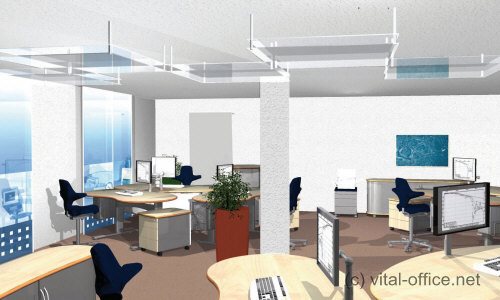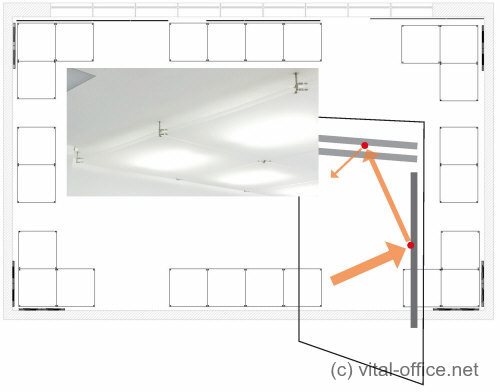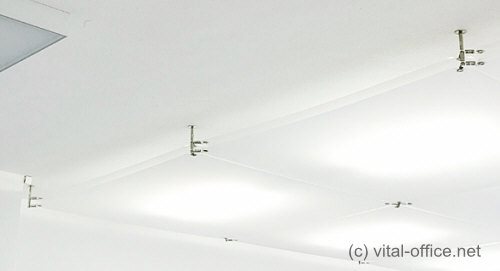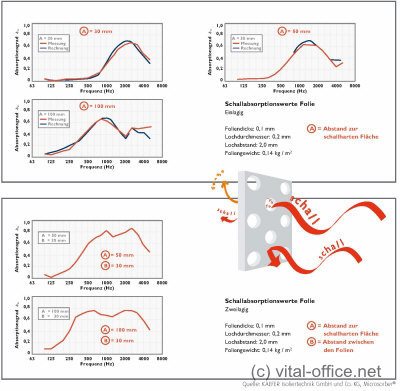
Acoustic absorbers for wall and ceiling
The transparent or translucent acoustic absorbers reduce reverberation times and noise levels.
Almost invisible with the transparent foils the architecture inside can still be seen.
The foils are easy to install and versatile. They can be installed in front of walls and glass facades and all types of ceilings- even underneath thermoactive ceilings.
It allows visions of transparency and open space to come true while meeting demands of acoustics.

Optimized placement of sound absorbers
The placement of sound absorbing panels has an immense influence on how noise is enhanced or reduced.
In large open rooms it is necessary to refract sound through objects and furnishings for optimal sound absorption of the installed acoustic ceiling.
In less diffuse rooms sound absorbing panels on parts of walls additionally to the ceiling enhance the overall sound absorption significantly.
This also reduces flutter echoes between parallel walls.
Advisable is to position sound absorber opposite the speaker’s wall as well as installing absorbers in the room’s corners. Because direct and angular refractions with their long echo time of more than 50ms are clearly, as very much stressing echo, audible for the human ear.

© Käfer Isoliertechnik
Acoustic absorbers and lightning included
The Vital-Office sound absorbing micro perforated foils can also be used as light diffuser. Installations with lightning behind the foils create an ergonomic smooth light atmosphere.

© Käfer Isoliertechnik

Technical specifications
The high level of noise absorption results from the micro-perforation.
The holes in the patented foil have a diameter of approx. 0.2mm and are spaced 2mm apart.
The conversion from noise to thermal energy mainly occurs at the edges of the holes.
Reverberation times and sound levels are reduced significantly.
We advise a distance of 30 to 100 mm to the sound-reflecting surface. Optimal effects are achieved by using two layers of acoustic foils. By having a distance of 30 mm between the two layers the acoustic spectrum of absorption is broadened.
All building materials are class B1 in accordance with DIN 4102 and therefore not easy ignitable. The poly carbonate foil is UV-stabilized and non-static.

